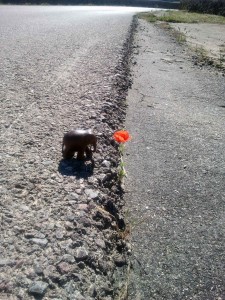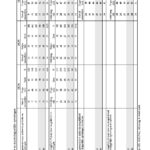Leslie Kavanaugh – My Choice On Sustainability
No comments yet The word “sustainability” is perhaps one of the most frequently evoked, yet most ill-defined concepts in contemporary discourse. The concept can be made to apply to scales ranging from (anti-) globalization to eating healthily. Although the concept is far from new, being bound to the notion of human beings tied to and embedded in the earthly environment, in the last century cognisance of the scarcity of resources – both human and material – have brought to the fore real concerns about the future viability of the earth as a human habitat.
The word “sustainability” is perhaps one of the most frequently evoked, yet most ill-defined concepts in contemporary discourse. The concept can be made to apply to scales ranging from (anti-) globalization to eating healthily. Although the concept is far from new, being bound to the notion of human beings tied to and embedded in the earthly environment, in the last century cognisance of the scarcity of resources – both human and material – have brought to the fore real concerns about the future viability of the earth as a human habitat.
In the age of global markets for goods and services, underlying any attempt for a sustainable environment would be the maintenance of a fair trade organizations, protection against exploitation of labour and materials, and an equitable constructive finance system. One of the first policy documents developed in association with the United Nations Conference on the Human Environment was Barbara Ward and René Dubos; Only One Earth: The Care and Maintenance of a Small Planet, (W. Norton & Co, 1972). http://www.iied.org/
More recently, the European Unions’ Institute of New Economic Thinking acknowledges that any “sustainable” development in sustainability must be accompanied by fundamental changes in economics and politics. http://ineteconomics.org
Other excellent resources for “thinking of the world as a system over time”, is the International Institute for Sustainable Development: http://www.iisd.org/sd/
The Earth Institute – Columbia University: http://www.earth.columbia.edu/sections/view/9
The ISE – Institute for Social Ecology: http://www.social-ecology.org/about/about-the-ise/
And not forgetting, Buckminster Fuller: http://bfi.org/ whose whole systems approach advocated in his book: Spaceship Earth. Operating Manual for Spaceship Earth (New York: E.P. Dutton & Co., 1963) revolutionized thinking about the earth as an interconnected system not isolated from the universe itself.
Technology in the last decades has certainly provided the means to provide sustainable economics, environments, and materials. A few websites for an overview:
Research for energy-optimised construction: New Technologies – http://www.enob.info/en/new-technologies/
Alternative Energy Information Resources and Renewable Energy Technologies: http://www.alternative-energy-news.info/about/
And remembering that renewable energy is also about conservation of energy and building smart in a symbiotic marriage with the environment, sensitive the climate and orientation of the building, passive solar is often neglected in favor of more high-tech solutions. See for example, fifteen years Passive House in Darmstadt – Kranichstein: http://www.passivhaustagung.de/Kranichstein.html
In addition, beyond the notion of mere recycling is the Cradle-to-Cradle movement that thinks about products not only in their source materials and life utility, but also as a life-cycle connected to other processes and materials. From the Sustainability Dictionary at http://www.sustainabilitydictionary.com/ the definition of Cradle-to-Cradle is a “framework seeks to create production techniques that are not just efficient but are essentially waste free. In cradle to cradle production all material inputs and outputs are seen either as technical or biological nutrients. Technical nutrients can be recycled or reused with no loss of quality and biological nutrients composted or consumed.”
William McDonough and Michael Braungart; Cradle to Cradle. Remaking the Way We Make Things (Vintage, 2009). http://www.cradletocradle.com/
William McDonough in his architectural practice implements in a practical way the concepts of Cradle-to-Cradle. See http://mcdonoughpartners.com/design-approach/
Yet obviously, questions concerning sustainability must be answered within the context of specific human communities. An environment is not sustainable just because it uses alternative energy sources, or recycles materials. In the late 1960’s, when mass urban “renewal” projects were being planned and implemented, Ada Louise Huxtable reminded us that a community is also the people and the built environment that could be “sustained”. Her seminal, Kicked a Building Lately? argued for the preservation of neighborhoods that were sustainable in the sense of supporting communal life in an amenable way, rather than tearing down entire segments of the city and building high-rise housing. Another important thinker/architect originating from this period was Christopher Alexander. He writes in his most recent book, The Battle for Life and Beauty of the Earth: A Struggle between Two World Systems (Oxford: OUP, 2012): “The purpose of all architecture is to encourage and support life-giving activity, dreams, and playfulness. But in recent decades, while our buildings are technically better-more sturdy, more waterproof, more energy efficient- they have also became progressively more sterile, rarely providing the kind of environment in which people are emotionally nourished, genuinely happy, and deeply contented.” Beauty and engagement are critical factors simply because when people care, they take care. Alexander has helped communities plan and provide for a sustainable environment – not only the infrastructure required but enabling the desire to sustain, to endure, throughout many generations. http://www.livingneighborhoods.org/ht-0/libraryofunfoldings.htm Here to sustain is to endure.
And just when the facts of global warming, international greed, territorial conflicts and exploitation of resources become overwhelming, a reminder of the small scale initiatives brought about by courageous and principled individuals give hope. My favorite: YES Magazine, a wealth of information and support: http://www.yesmagazine.org/issues/making-it-home/how-to-build-green-on-a-budget
In conclusion, I name only one initiative, proving that one man gathering about himself a clear vision can make a difference. Samuel Mockbee started with D.K. Ruth in 1993 the Rural Studio at Auburn University School of Architecture. His vision was real “roll-up your sleeves” sustainability, challenging his design studio students to use discarded and donated materials to renovate and create spaces in the rural impoverished county around the university. http://www.ruralstudio.org/about/purpose-history
For Mockbee, architecture was providing a “shelter for the soul.” I have found no better idea of sustainability: shelter.
See: Leslie Kavanaugh
You May Also Like
Comments
Leave a Reply





